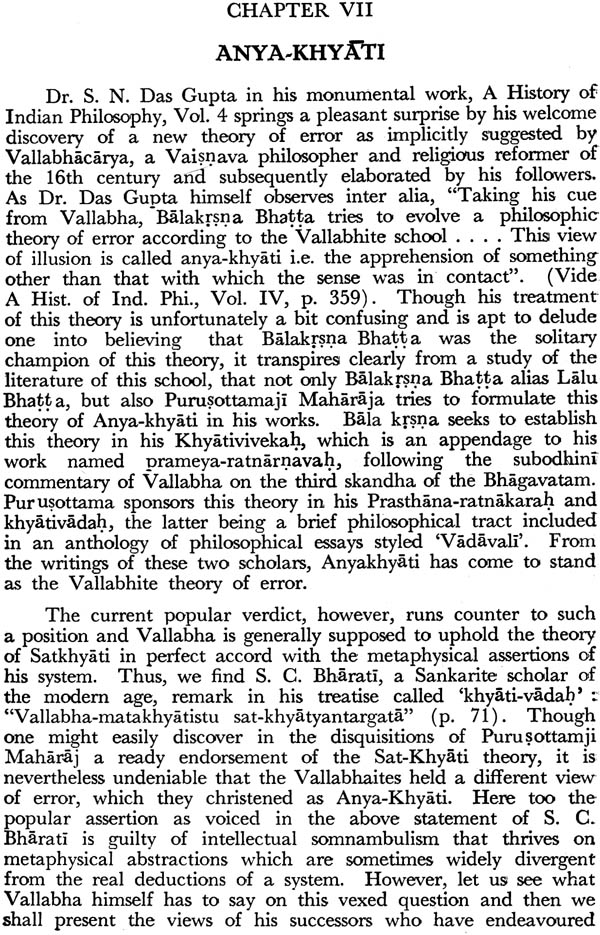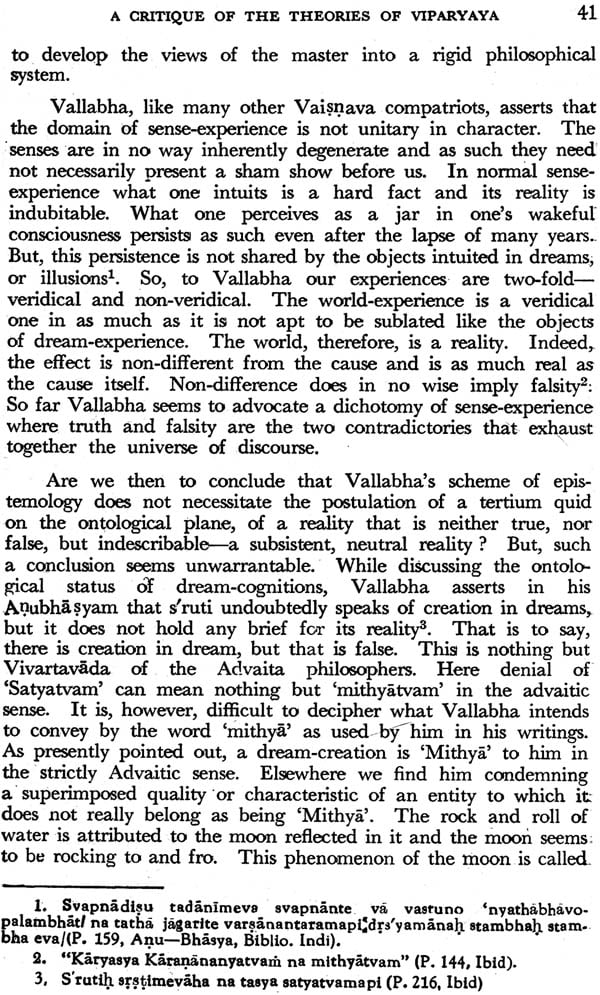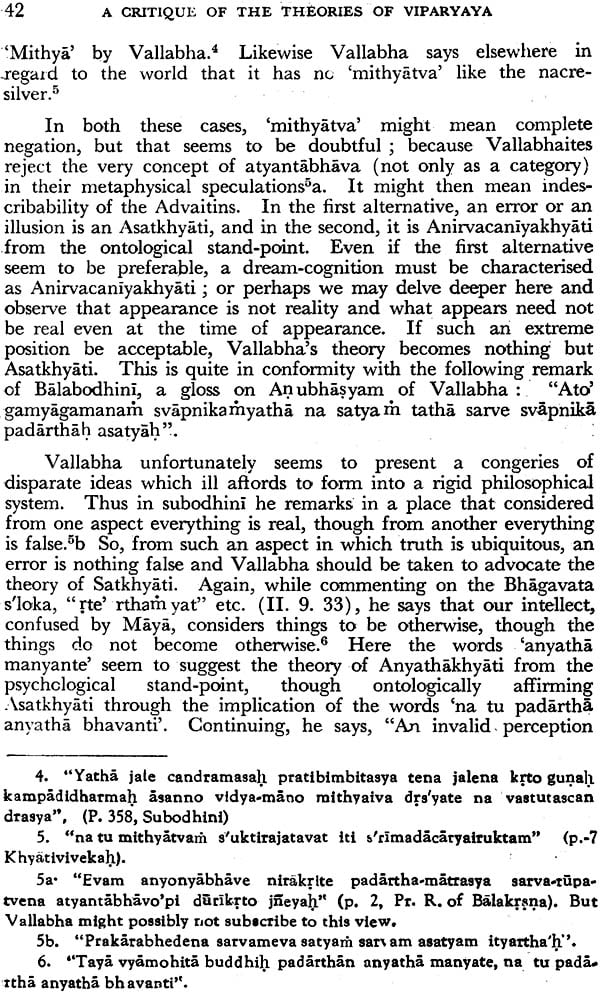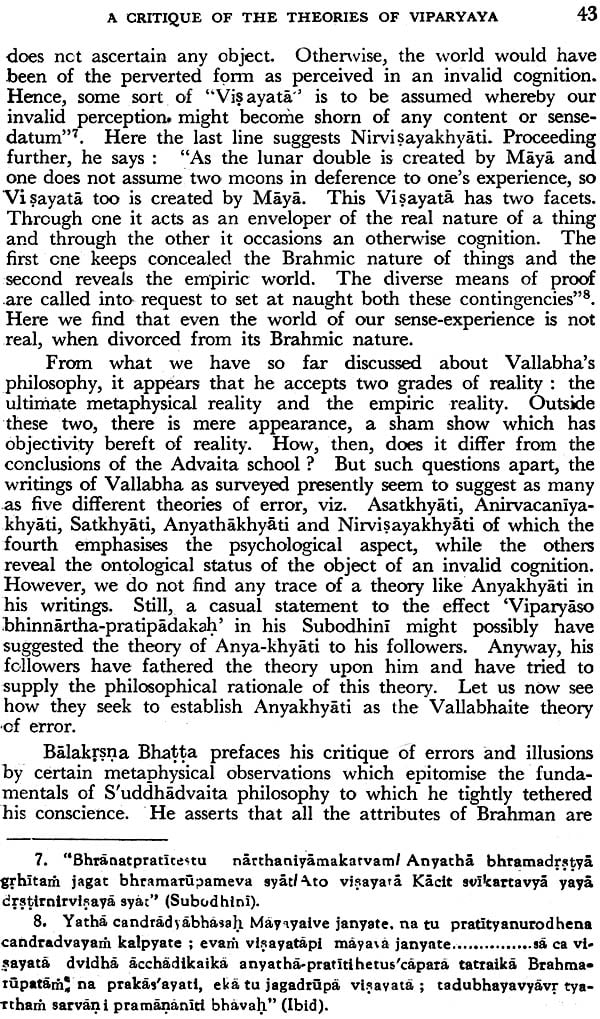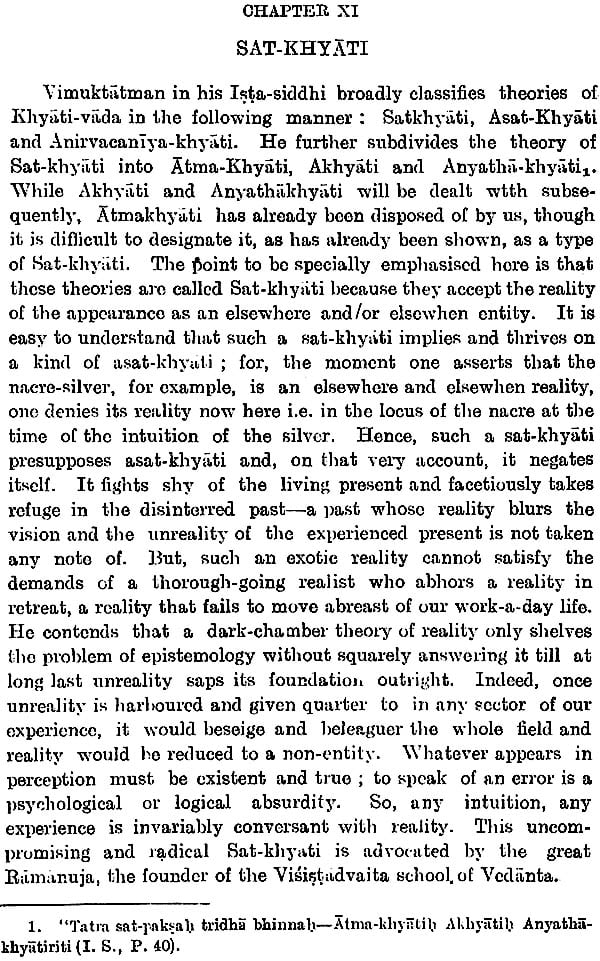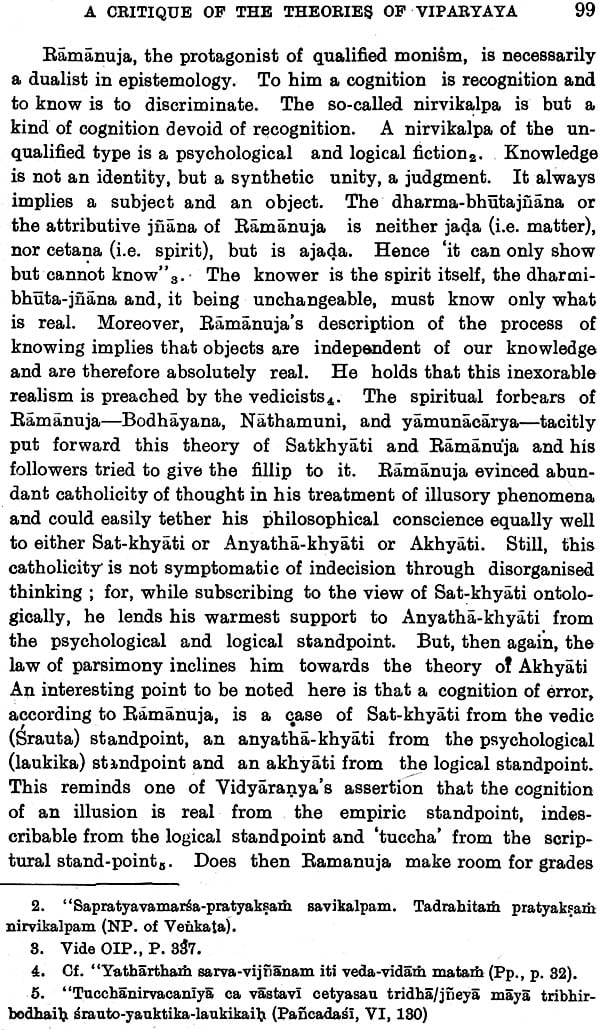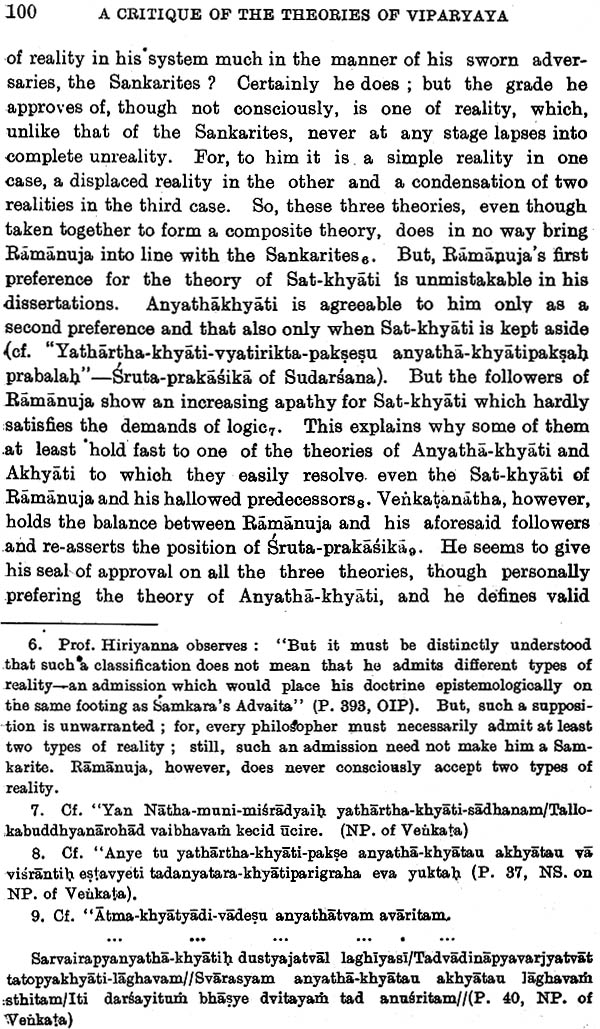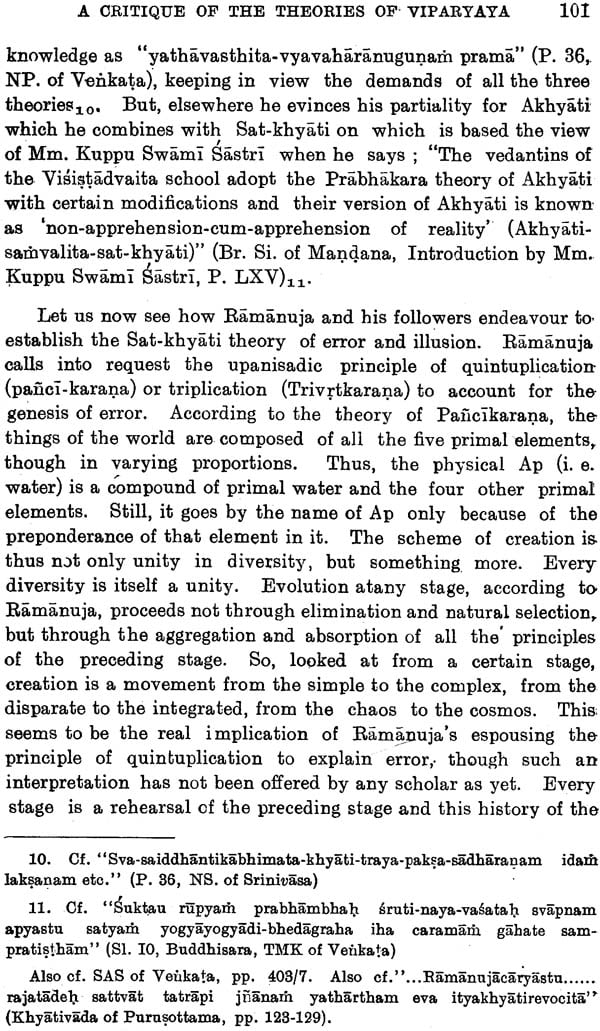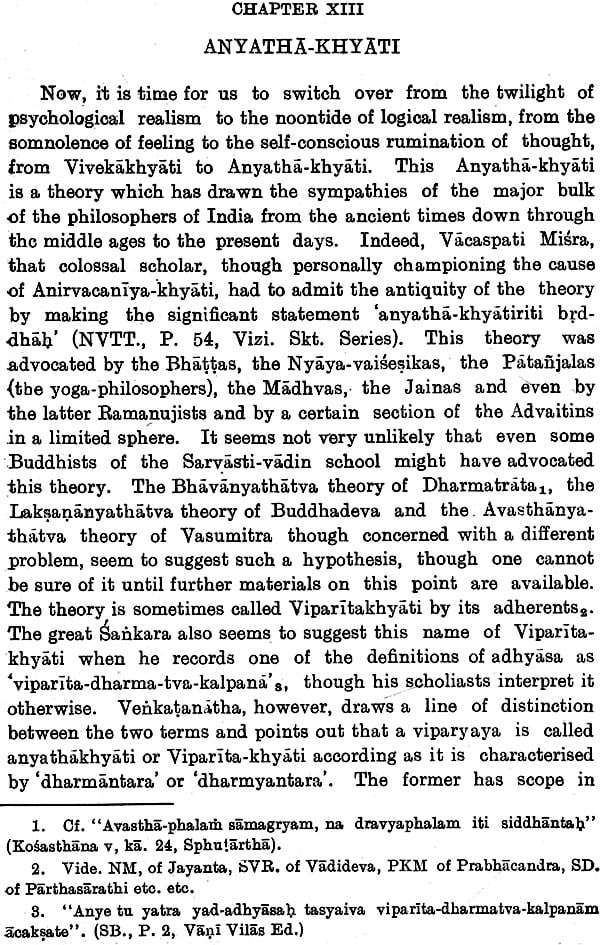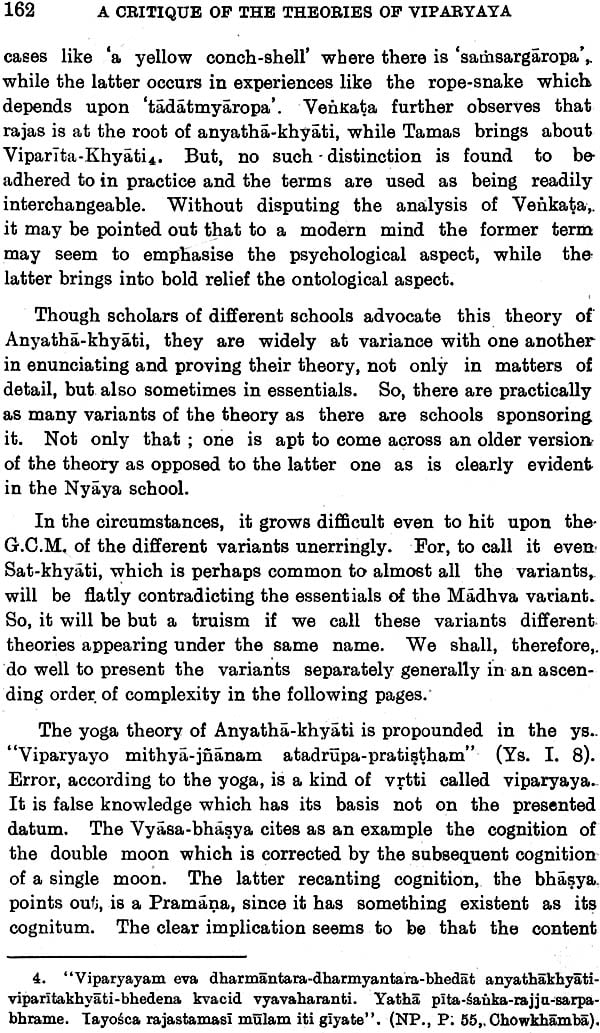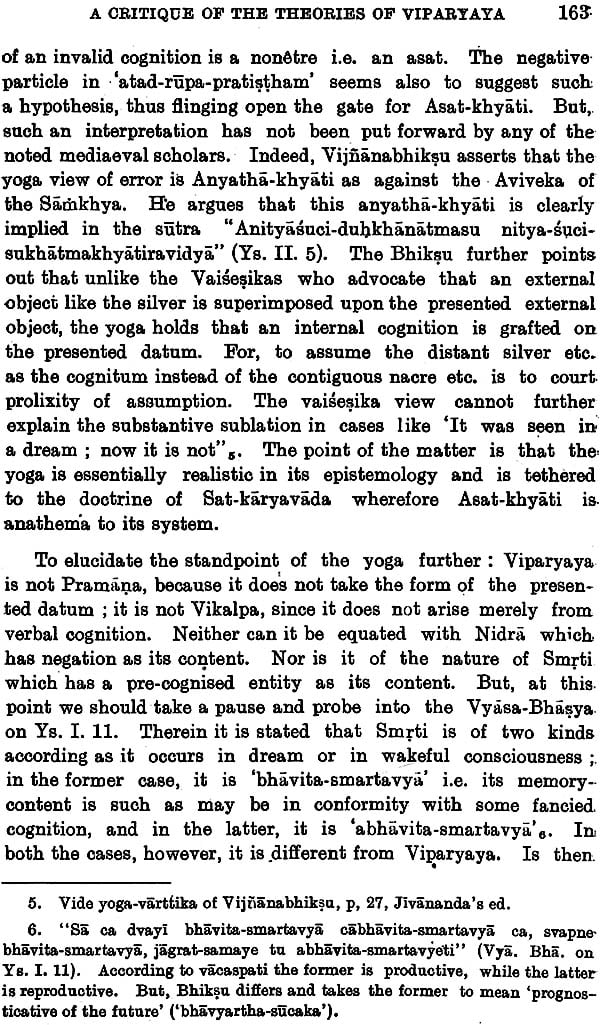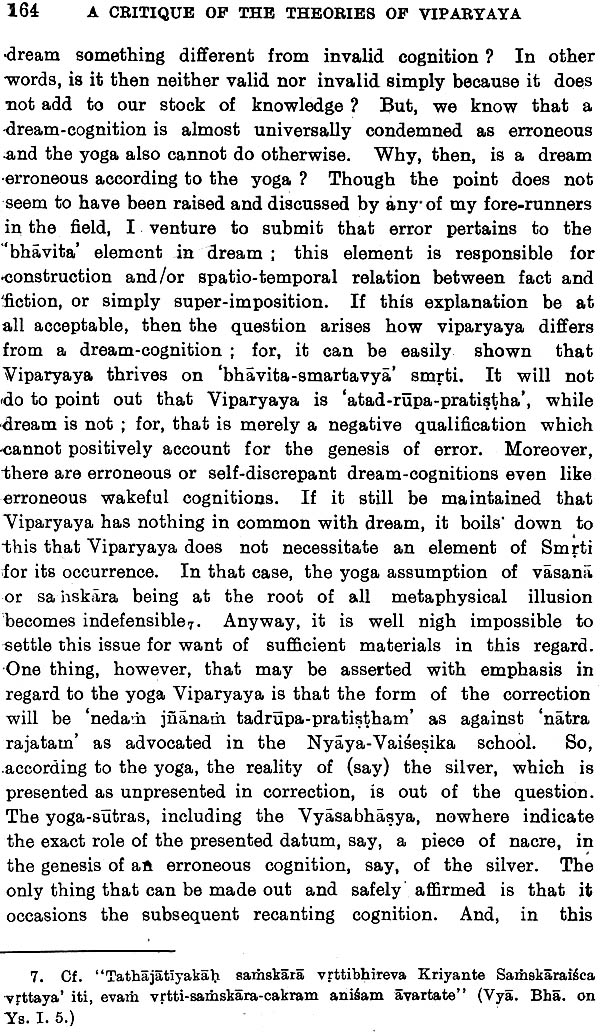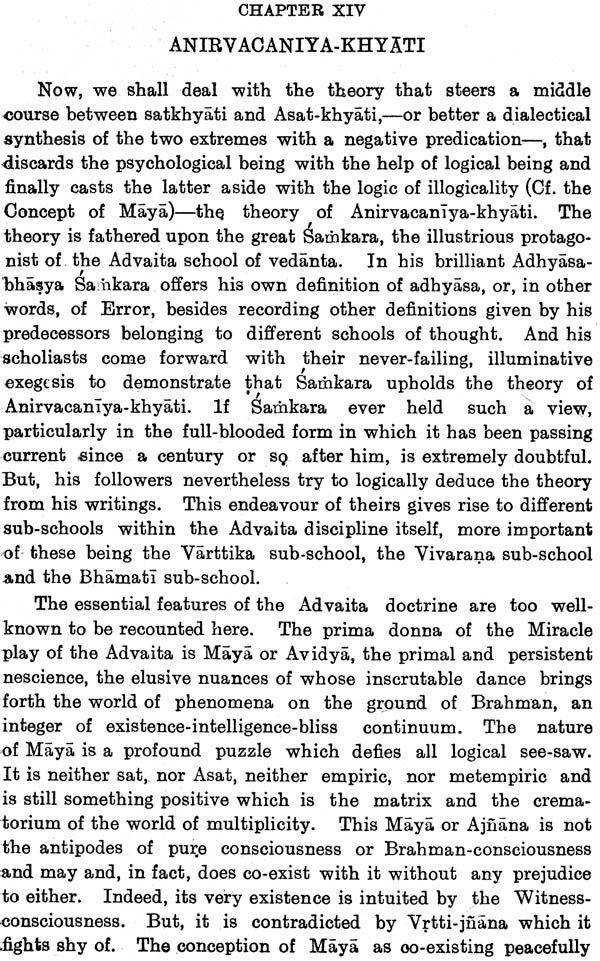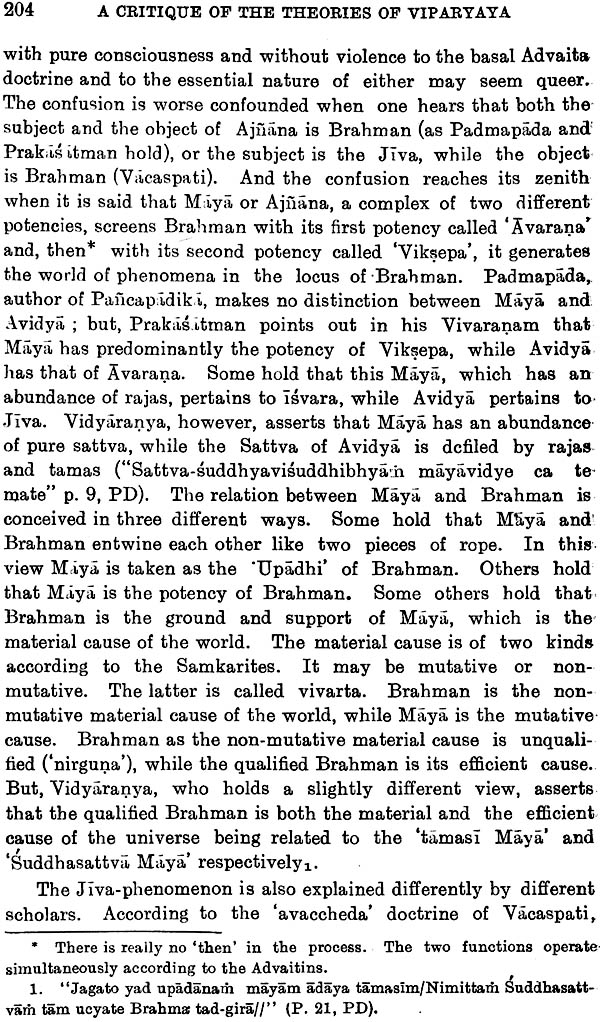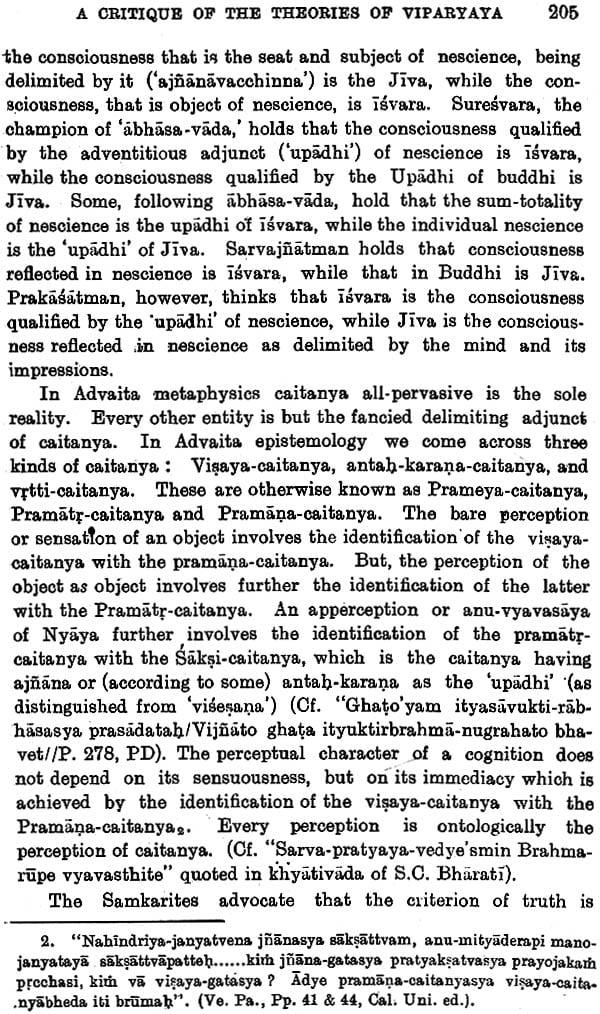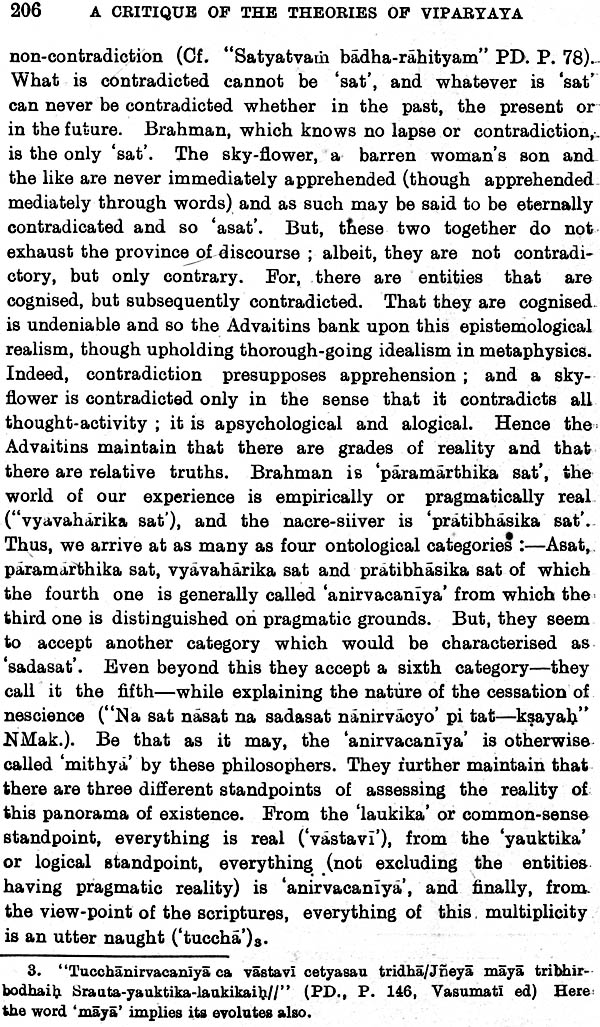
A Critique of The Theories of Viparyaya (An Old and Rare Book)
Book Specification
| Item Code: | NAL592 |
| Author: | Nanilal Sen |
| Publisher: | Rabindra Bharati University |
| Language: | English |
| Edition: | 1965 |
| Pages: | 268 |
| Cover: | Hardcover |
| Other Details | 8.5 inch x 5.5 inch |
| Weight | 340 gm |
Book Description
Foreword
This is a highly specialised book dealing with an important epistemological question having on the different systems of Indian Philsophy. To get an idea of the nature and scope of this book we should start with acquainting ourselves with certain technical term touching on the subject. We may conveniently do so.
The title of the book indicates that it is a critical study of the theories of Viparyaya. Now what is Viparyaya? Sankaracarya defines it very tersely, but clearly enough, as a cognition of thatness in something other than that’. Let us have a concrete example. The typical example cited in books dealing with the subject will serve our purpose very well. When we look at a shell of the mother of pearl, known as nacre, we may perceive it as such. This is a case of correct perception. But sometimes it does happen that its silver-white lustre may mislead us to take it to be a piece of silvers. This, in psychological terminology, is known as illusion. It is to be contrasted with what is known as hallucination, where we perceive a thing without there being any objective basis for it.
In Indian epistemology also there is a similar scheme of terminology. A false perception is called Bhrama. This may be subdivided into two classes. In one case there is an objective basis but the cognition is faulty, as in the example cited above, where nacre is mistakenly perceived as silver. It is, therefore, called Salambana Bhrama. In the other kind there is no objective basis at all in hallucination. It is, therefore, called Niralambana Bhrama. Now Viparyaya refers to the first kind of faulty perception, It may be, therefore, taken as synonymous with illusion in a general way. To be precise, it refers to errors of perception of all varieties.
There is another term with which acquaintance is essential. That is Khyati. In ordinary parlour Khyati means cognition. But as a technical term used in Indian epistemology, it has acquired a different connotation. Here it stands for the same thing as illusion. Accordingly the different theories of illusion are known as Khyativada.
Viparyaya is an important and gripping epistemological problem finding its place in all the different systems of Indian philosophy. The literature bearing on the problems is so vast, varied and intricate that it is resent in the short compass of a sizable book all the diversified reflection of the different Sanskritic philosophers, whose number and volume of total output are, to say the least, definitely heart-depressing.
The deliberations of my fore-runners in the field are in some cases incidental and fragmentary. In other cases where Viparyaya is the principal or sole concern of the author, the discussion generally pertains to three, four or, at best, five widely current theories of Viparyaya from sectarian stand-point. leaving out of account not only the other theories, but also the different variants and ramification of the well-known theories. So, the systematic and unbiased presentation of the different thories of Viparyaya together with critical evaluation of each was a genuine desideratum. And I have perhaps been overbold in addressing myself to this titanic task, and I, therefore, meekly offer this book to the indulgence of scholars. Nevertheless, I want very humbly to submit that my work embodies discovery of new facts observed by myself, of new relations of observed by others and constitutes an almost exhaustive study and criticism of the published Sanskrit and English works on the subject. The special features of the book may be broadly outlined thus:-
(1)-The First Chapter distinguishes Viparyaya from the Yoga and the Buddhist Vikalpa and from Samsaya. Different causes of Viparyaya and its classification dealt with exhaustively.
(ii)-The Chapters II-deal with theories which are all but unknown or are most imperfectly known. The myth about Bhaskara advocating Anyathakhyati has been shown to be baseless in Chapter VI.
(iii)-In Ch. VIII it has been shown that Sadasat-khyati is the real Samkhya theory of Error; three different interpretations of the theory offered. In Ch. IX it has been shown that Vaibhasikas did not uphold Atma-khyati. The difference between Viparyaya and Samvrti-satya according to Yogacara brought out-a point perhaps not discussed by others. A new interpretation of the philosophic position of Yogacara. In Ch. X I have suggested a new interpretation of the ‘Madhyamika’ and of Madhyamika philosophy.
(iv)-A new interpretation of the Satkhyati of Bamanuja, new arguments against it and its variants presented in Ch. XI. In Ch. XII the implications of the Prabhakara theory have been interpreted anew and the view that older Prabhakaras accepted a third unitary cognition to explain Viparyaya has been disproved and its real sponsor has been traced out.
(v)-In Ch. XIII Anyathakhyati with all its variants has been discussed. A new interpretation of the Yoga view. Mandana’s view and the hitherto unexplored dimensions of Kumarila’s theory discussed.
(iv)-A new interpretation of the Satkhyati of Bamanuja. new arguments against it and its variants presented in Ch. XI. In Ch. XII the implications of the Prabhakara theory have been interpreted anew and the view that the older Prabhakaras accepted a third unitary cognition to explain Viparyaya has been disproved and its real sponsor has been traced out.
(v)-In Ch. XIII Anyathakhyati with all its variants has been discussed. A new interpretation of the Yoga view. Mandana’s view and the hitherto unexplored dimensions of Kumarila’s theory discussed. The Madhva theory discussed. In Ch. XIV Anirvacaniyakhyati has been most exhaustively presented. In Ch. XV the Acintyakhyati of Srijiva has been presented. In Ch. XVI an eclectic theory of viparyaya has been presented.
In spite of my best efforts, I could not avoid typographical and linguistic blemishes. For all these and for my claim to originality, I crave the indulgence of the masters and of my fore-runners in the field. If I have contradicted many, I have done it by learning much from them and, therefore, mean offence to none.
My sincerest and grateful thanks are due to our most humane Vice-Chancellor of wide erudition who very kindly has prefaced my book with an excellent Foreword. I must thank that radiating, scholarly personality, Dr. Gaurinath Sastri, Principal. Govt, Sanskrit College, West Bengal for offering me all facilities to use the Sanskrit College Library, for taking keen interest in the progress of the work and for going through a few chapters of the book and suggesting improvement thereon. Thanks are also due to Shri. D. Debnath, M. A., Secretary to the Vice-Chancellor for his tenacious interest in publishing the book, weathering all the storms raised by me now and then. The manager and the compositors of the National Printing Works deserve hearty thanks for rushing the book through the Press amidst heavy odds. It now remains for me to refer with delightful tears to one Dr. Bhattacharys (who should remain incognito), who has been a perpetual source of inspiration to me right from the beginning of my career. He was and is the never-failing propelling force behind my literary pursuits and exhorted, enthused, scolded and battered and battered me with world even like a dictator to make a man of me. I had better stop here, for my words are too effete to express adequate loving gratitude to him.
| Foreword | i- iii | |
| Preface | v-vii | |
| Chapter I | Introductory | 1-15 |
| Chapter II | Nirvisaya-khyati | 16-20 |
| Chapter III | Niradhisthana-Khyati | 21-23 |
| Chapter IV | Akhyati | 24-27 |
| Chapter V | Alaukikakhyati | 28-31 |
| Chapter VI | Prasiddhartha-khyati | 32-39 |
| Chapter VII | Anyakhyati | 40-47 |
| Chapter VIII | Sadasat-Khyati | 48-58 |
| Chapter IX | Atma-khyati | 59-78 |
| Chapter X | Asat-khyati | 79-97 |
| Chapter XI | Sat-khyati | 98-121 |
| Chapter XII | Vivekakhyati | 122-160 |
| Chapter XIII | Anyathakhyati | 161-202 |
| Chapter XIV | Anirvacaniya-khyati | 203-238 |
| Chapter XV | Acintya-khyati | 239-242 |
| Chapter XVI | Towards a theory of Viparyaya | 243- 248 |
| Appendix | 249-251 | |
| A select bibliography with abbreviations | 252- 256 | |
| Index | 257-259 |
